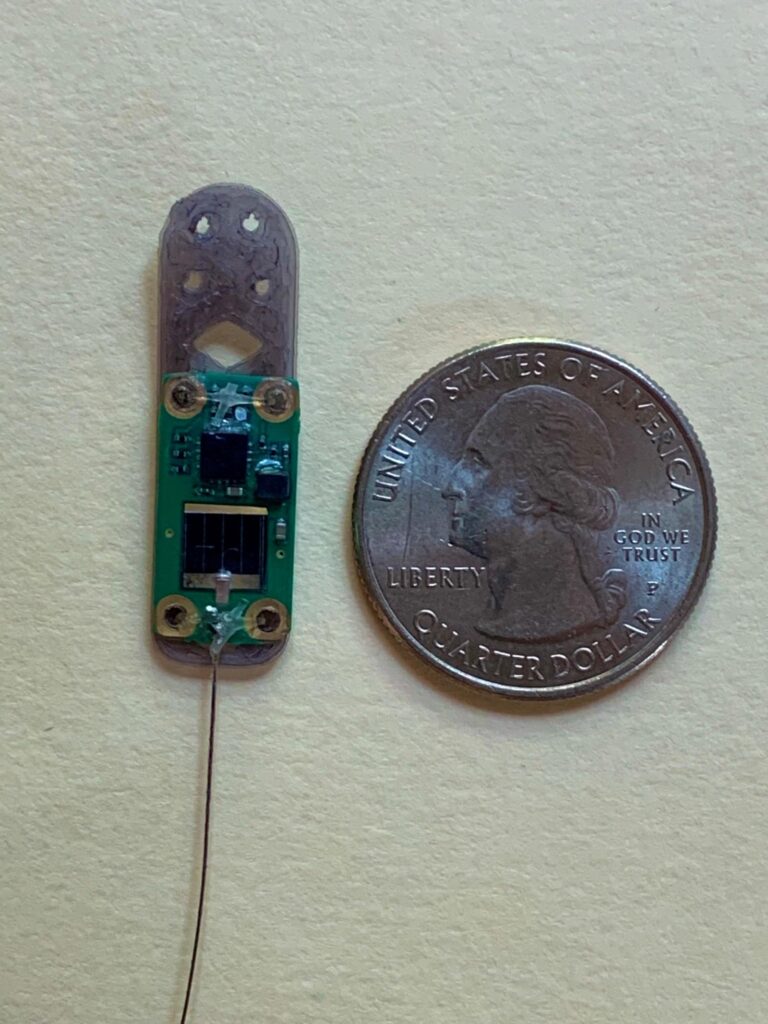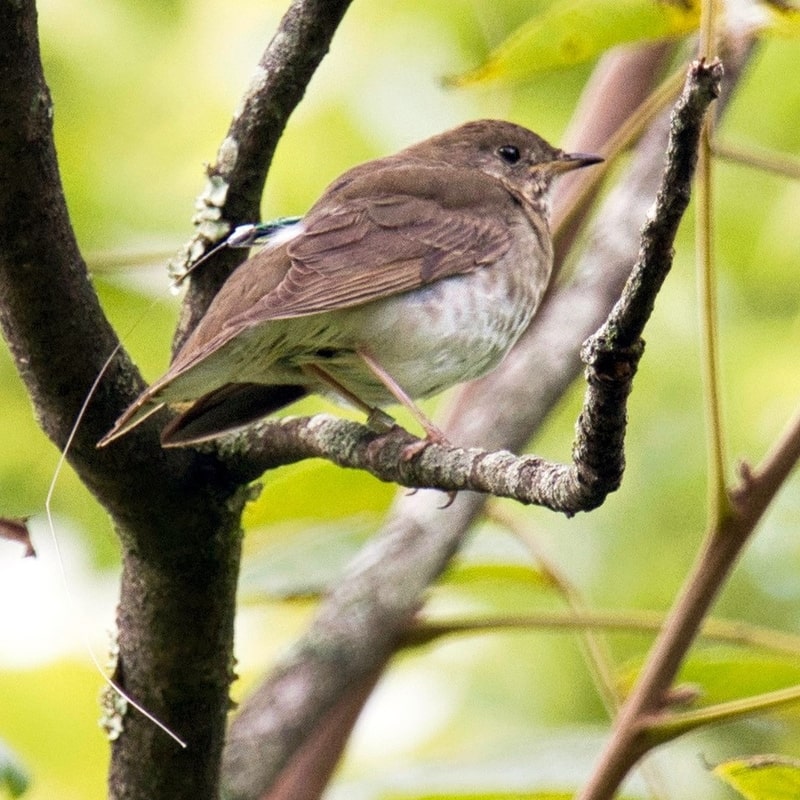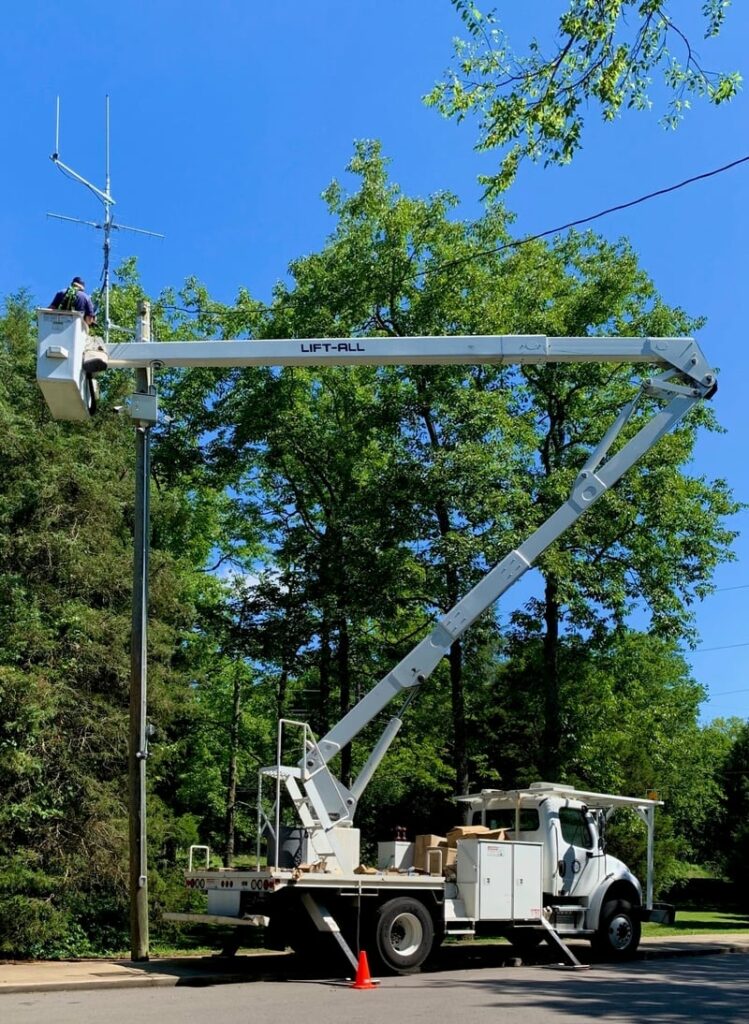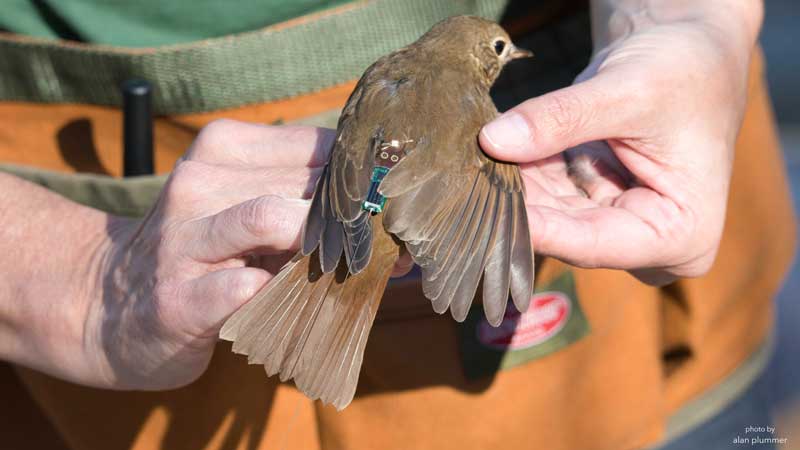Cutting-edge Research Featured on TN Wild Side
For decades, Warner Parks has played a significant role in advancing our understanding of birds here in Tennessee. Warner Parks has the oldest, continuous Eastern Bluebird Nest Box project in the U.S, started in 1936 by Amelia Laskey to monitor nesting success of bluebirds. As we celebrate the 40th year of our Warner Parks Bird Banding Station, the B.I.R.D. team has added a new research project called Motus to complement our long-term banding efforts.
What is Motus?
The Motus Wildlife Tracking System is an international, collaborative research network that uses coordinated automated radio telemetry to study movements of small animals. The purpose of Motus is to facilitate landscape-scale research and education on the ecology and conservation of migratory animals.
How does Motus work? Federally permitted researchers fit small lightweight radio-transmitters on birds and that signal can be detected by a receiver station. The data from these receivers is then centralized at the Birds Canada National Data Centre where it is filtered, analyzed, archived, and disseminated to all researchers and organizations in the network.
How do the transmitters work? Each tag emits a unique signature. When that transmission is picked up by a receiver station, it’s called a ‘hit’ and allows us to learn where animals go, how fast they move, how long they stay in an area (stop-over ecology), and if they return to the same location (site fidelity).
Why is this considered new technology? Until recently, transmitters had short battery-life & were too heavy to put on small songbirds. The network of shared receiving stations (Motus) allows researchers to learn more about the full life-cycle of animals from Canada to South America.

Motus radio tag, quarter for scale. 
Bird tagged with a Motus radio tag
What is Warner Parks’ role in all of this?
Thanks to a grant from the Mapp Foundation, the B.I.R.D. Program is contributing to this cutting-edge research in 3 ways:
- Receiver Stations. On July 13, 2020, we installed the first dual-frequency receiver station in Tennessee. You can view this station in the Warner Park Nature Center parking lot. Soon, we will be installing a second receiver station at the Harpeth Hills Golf Course which will give us coverage across Warner Parks.
- Beginning September 2020, we began placing LifeTags (light-weight, digitally coded, solar powered radio transmitters) to targeted bird species to better understand their habitat and conservation needs. Urban parks are critical to birds, especially during migration. Our research will use five species of thrushes (Swainson’s Thrush, Gray-checked Thrush, Veery, Hermit Thrush, and Wood Thrush) to assess if Warner Parks, with its relatively intact forests, is an important habitat for migratory stopover and wintering and breeding birds. To date, we have deployed LifeTags on 28 thrushes.
- The B.I.R.D. team is a founding member of the Southeast Motus Working group, an informal team of researchers sharing lessons learned with the intention of building a coordinated network of receiver stations throughout the south. Warner Parks and several members of this working group have been featured in the latest edition of Tennessee Wild Side – click here to view.

What is a dual-frequency receiver station? Our station can pick up both 166 mgz and 434 mgz frequency transmitters. The 166 transmitters have been used historically in the Motus network. The 434 transmitters are produced through Cellular Tracking Technologies (CTT). The LifeTags produced by CTT are solar-powered which means they will last the life of the bird, providing an even broader spectrum of life-history information.
Where are these receiver stations? North, Central, and South America. From zero stations in early 2019, we now have seven receiver stations in TN and more on their way! You can view them at www.motus.org.
Gratitude.
A huge thank you to the Barbara J. Mapp Foundation for supporting this research and so many friends, volunteers and partner who made this possible including Amy & Carl Wilms, Dr. David Aborn, Tennessee River Gorge Trust, The Nature Conservancy of TN, Metro Parks Maintenance staff, Friends of Warner Parks, and our fabulous volunteer BIRD team. A huge thank you to volunteer Steve Ghertner, affectionately referred to as “The Engineering Department”, for his expertise, generosity, and hours of work to make the project happen!
The BIRD Program is funded by Friends of Warner Parks, in collaboration with Warner Park Nature Center and Nashville Metro Parks and Recreation. This year marks the 40th year of the WPNC Bird Banding Station thanks to our dedicated volunteers, staff, and partners! Please support our legacy bird research and public engagement programs with a donation, becoming a member, and volunteering with Warner Parks. #ProtectTheBirds #ProtectWarnerParks.


